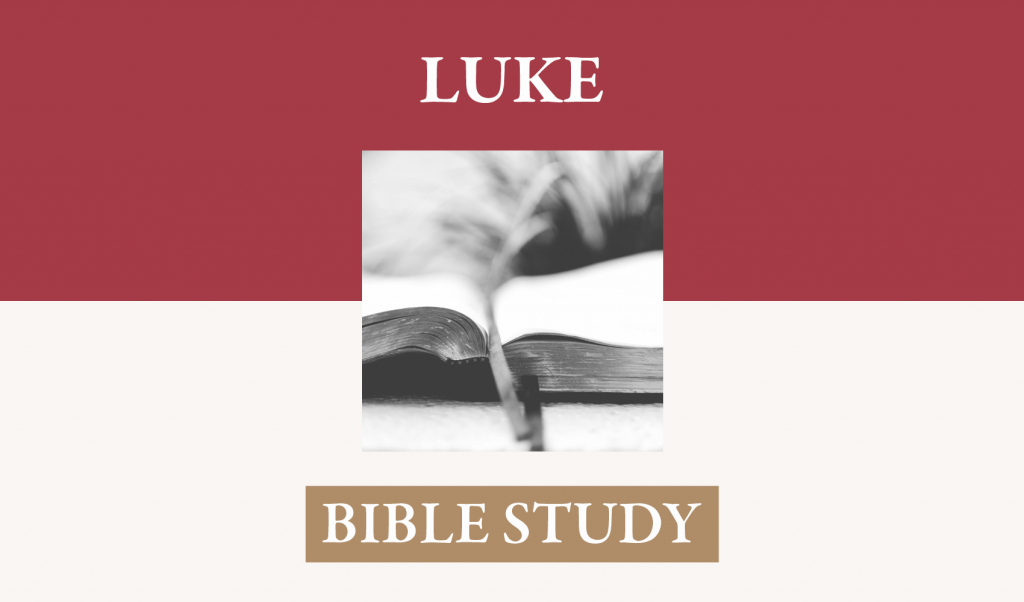Week of April 16, 2017
The Point: The resurrection of Jesus is a fact you can build your life on.
He Has Risen: Luke 24:1-8.
[1] But on the first day of the week, at early dawn, they went to the tomb, taking the spices they had prepared. [2] And they found the stone rolled away from the tomb, [3] but when they went in they did not find the body of the Lord Jesus. [4] While they were perplexed about this, behold, two men stood by them in dazzling apparel. [5] And as they were frightened and bowed their faces to the ground, the men said to them, “Why do you seek the living among the dead? [6] He is not here, but has risen. Remember how he told you, while he was still in Galilee, [7] that the Son of Man must be delivered into the hands of sinful men and be crucified and on the third day rise.” [8] And they remembered his words, [ESV]
[24:1-8]. “The gospel is the good news about Jesus Christ: His life, His death, and His resurrection. The gospel promises that if we believe in Jesus, all our sins will be forgiven and we will live with God forever. This good news centers on the person and the work of Jesus Christ. We see this very clearly in the Gospel of Luke, which is all about Jesus from beginning to end. Already in the opening verses, Luke announced his intention to give certainty concerning the things you have been taught [Luke 1:4], meaning the things taught about Jesus. Jesus is the center of everything that happens in the Gospel of Luke: calling disciples, teaching parables, rebuking religious leaders, calming storms, casting out demons, healing diseases, and feeding multitudes. Then, in the last week of His life, Jesus was betrayed, arrested, tried, condemned, and crucified. His living presence dominates every page of Luke’s Gospel. Until we get to chapter 24, that is. Here we find Jesus conspicuous by His absence. It is now the third day since He was crucified, dead, and buried – the day He said that He would rise from the dead. So Christ has risen. Yet in the opening verses of this chapter He is nowhere to be found – at least not in His bodily presence. Why not? If this is the day Jesus rose from the dead, then why don’t we see Him here, as we do everywhere else in this Gospel? If Luke wants us to know Jesus for sure, then why don’t we see Him raised from the dead. To understand why Jesus seems to be missing, we need to see what the women found when they went to the empty tomb, what the angel said to them there, and how people responded, whether in faith or unbelief. We begin with the little group of women who were the last people to leave the cross and the first to arrive at the empty tomb. At the end of chapter 23 these women still had some unfinished business to attend to. They had watched Joseph of Arimathea take the lifeless body of Jesus down from the cross and then lay Him in an unused tomb. Taking careful note of where the body was laid, they quickly went home to prepare the spices needed for a full and proper burial. Then they took their Sabbath rest, waiting one holy day before paying their last respects to the teacher they loved. The women never finished their task, however. They went back to the tomb the following day, which was the first day of the week. A surprise was waiting for them [1-3]. At early dawn is a striking expression. When these women set out on their errand of mercy, it was not simply dawn, but early dawn. This indicates how eager these women were to finish their task. In the providence of God, there had not been time to complete the burial process on the day Jesus was crucified. This was an important part of God’s plan because it drew the women back to His tomb. All during the long Sabbath between Good Friday and Easter Sunday they waited to finish their task, and when the time came, they left the house at the earliest possible instant. The women expected to find the dead body of Jesus. When last they saw Him He was as dead as could be, and naturally they assumed that death was the end of His earthly existence. Thus it never occurred to them that His body would be anywhere except the place where they had seen it laid to rest. Imagine how shocked they must have been to enter the tomb and find the body missing! For anyone who knows how this story ends – with Jesus triumphing over death through the resurrection of His body – it is hard to appreciate the full extent of their surprise. When they discovered that the body was gone, this could only add bitter sorrow to their sad distress. It was the shock of their lives – the aftershock that followed the earthquake of the crucifixion. The Jesus who was crucified, dead, and buried had now disappeared. Luke tells us that they were perplexed about this [Luke 24:4]. They were at a total loss. It simply did not make any sense to them; they could not explain it. Why did Jesus die the way that He died, suffering the dark reproach of the cross? How could someone so alive end up dead? Where was the body they had seen buried? Although the women did not know the answers to these questions, there were hints all around them. Miraculously, the stone had been rolled away from the tomb, leaving the house of death door-less. Even more remarkably, the body was not in the tomb. These were the first intimations of the resurrection, that Jesus has been raised from the dead. For us there is a further hint in the title Luke gives to Jesus in verse 3, where he calls him Lord. This is one of the specific titles of the risen Christ, for it is by His resurrection that Jesus is declared to be the Lord [Acts 2:36]. Even though Luke has not yet shown us that Jesus is alive, already he is expressing the joy of the resurrection and cannot help but confess that Jesus is Lord. The women were not ready to say this yet. They were still distressed and perplexed. All they could see was that the body of Jesus was not where they expected it to be. What the women found is that they could not find Jesus. The women also found some angels at the empty tomb, and their words help us understand why Jesus is missing from this passage [4-6]. Angels are the holy messengers of God. When they appear to human beings, they are usually robed in radiant splendor. Here they were resplendent in white and shining robes, what Luke calls dazzling apparel. Understandably, the women were awestruck, so they bowed down to worship. Then the angels gave them a mild rebuke, which was phrased in the form of a question: Why do you seek the living among the dead? This was the angels’ gentle way of saying that the women were operating on the basis of a faulty assumption. They assumed that Jesus was dead, which is why they were at the tomb so early in the morning, carrying the oils and the spices for His embalming. They believed that Jesus was still buried, and therefore they were looking to find Him among the dead. They were on the wrong premises because they had the wrong premise! Jesus was no longer dead at all, but alive, and there is no sense looking for someone where he is not to be found. He is not here, but has risen, the angels said. Jesus was not dead, but alive, and therefore this was the wrong place to look for Him. When we say that Jesus rose from the dead, we are referring to His bodily resurrection. We are not merely saying that Jesus is alive in our minds, our hearts, or our memories. Nor are we simply saying that His soul is immortal. On the contrary, we are dealing with the objective facts and the physical reality of what happened to a dead man’s body. The physical body of Jesus was raised from death to life by the power of God. This was not simply a case of resuscitation: the coming back to life of a mortal body that would die again. Rather, it was a physical resurrection: the raising of Jesus Christ to the immortal splendor of a body that could never die again. How could the women know that this was true? As far as they were concerned, Jesus was still missing. How could they believe in the resurrection of His body unless they could see Jesus with their own eyes? More importantly, how can we believe this? How can we know for sure that Jesus really did rise from the dead? The angels did not try to reason on the basis of the physical evidence of the empty tomb. Nor did they make a case for Christ by refuting alternative explanations for what happened to the missing body. Instead, the angels simply told these women – and us – to remember what Jesus said: Remember how he told you, while he was still in Galilee, that the Son of Man must be delivered into the hands of sinful men and be crucified and on the third day rise [6-7]. We are to believe in the resurrection on the basis of what Jesus said. The empty tomb is not self-explanatory. There is a word that explains the deed, and this word is the gospel message that Jesus not only died, but also rose again with a glorious and everlasting body that would never die again. The angels told the women to remember the prophecies Jesus made of His death, burial, and resurrection [Luke 9:22; 18:32-33; 24:46]. Everything happened just the way that Jesus said. The words of His prophecies all came true. He was crucified, dead, and buried. Now it was the third day – the day Jesus promised to rise from the grave. Indeed, this was the day when He must rise from the grave, for the earlier promises of the gospel expressed a divine compulsion. Therefore, when the women saw the empty tomb, they should have known that Jesus was alive from the dead. The reason they were perplexed was that they did not yet believe what Jesus said. This is often the case: unless and until we believe in the Word of God, life is all too perplexing. But when we do believe, everything starts to fall into place. This is how we know for sure: by believing the gospel promise that Jesus died and rose again. We have not yet seen Jesus in His resurrection body, any more than the women saw Him when they went into the empty tomb. But we have heard the gospel word, which should be enough for us, as it should have been enough for them.” [Ryken, pp. 630-637].
Touch Me, and See: Luke 24:36-40.
[36] As they were talking about these things, Jesus himself stood among them, and said to them, “Peace to you!” [37] But they were startled and frightened and thought they saw a spirit.[38] And he said to them, “Why are you troubled, and why do doubts arise in your hearts? [39] See my hands and my feet, that it is I myself. Touch me, and see. For a spirit does not have flesh and bones as you see that I have.” [40] And when he had said this, he showed them his hands and his feet. [ESV]
[24:36-40]. “The physical resurrection of the human body after death is a basic tenet of the Christian faith. The ancient ecumenical creeds clearly state that Jesus rose again on the third day. The Nicene Creed ends by saying, “We look for the resurrection of the dead and the life of the world to come.” “We believe,” it says in the Apostles’ Creed, “in the resurrection of the body.” Yet most people do not believe this. People have many reasons for not believing in the resurrection of the dead. Some people do not believe in life after death at all. The only thing we can know for certain, they say, is the life we are now living. Other people believe in life after death, but think that the life to come is merely a spiritual existence. There is no resurrection of the body, they say, but only a soul that returns to God. It certainly seemed impossible to the first disciples, who found it hard to believe in the bodily resurrection of Jesus Christ. Mark tells us both that they would not and that they did not believe [Mark 16:11,13]. Luke adds the unusual reason they had for not believing: they disbelieved for joy [41]. The disciples experienced this joyful disbelief at the end of the most extraordinary day in human history. The day had begun at the first light of dawn, when a little group of women went to the garden tomb with spices for burial. There they saw angels, who announced the stunning news that Jesus was risen. For the rest of the morning there was a good deal of running back and forth, as various disciples checked and rechecked the empty tomb, trying to confirm whether it was really true that Jesus was alive. Soon people started spreading reports that they had seen the risen Christ. But this was so hard to believe that people who had not seen Jesus for themselves were not sure what to make of it. The main example in Luke is Cleopas, who left Jerusalem that afternoon with a friend, heading for Emmaus. The two of them had heard what the women said about the empty tomb, but they were still grieving the death of Jesus. Their conflicting emotions were such a struggle between hope and despair that they could not quite bring themselves to believe that Jesus was alive. Then Jesus Himself overtook them on the road out of the city. He walked with them, and talked with them, and preached them the Gospel according to the Old Testament. Finally, when He broke bread with them around the dinner table, they realized that it was really Jesus. Immediately they went back to Jerusalem to tell the other disciples. This part of the story is essential in completing the pattern we observe in all of the stories from the first Easter. As eyewitnesses of the resurrection, the disciples moved from being bewildered, to getting rebuked for their unbelief, to receiving instruction about the gospel plan of God, to sharing the good news that Jesus Christ had risen from the grave. Cleopas and his companion shared this joyful news with the eleven remaining disciples and with other followers of Jesus. There the disciples made a statement that has become famous all over the world as a greeting for Easter Sunday: The Lord has risen indeed [34]. Suddenly Jesus appeared in the flesh [36]. The sudden appearance of the living Jesus was the final, confirming, and convincing proof of His bodily resurrection. Jesus was among His disciples with as much loving grace as ever. This is evident from the gift He offered – the gift of peace. Peace was the first word that Jesus spoke to His disciples after His resurrection. He mainly said it to let them know that they did not need to be afraid, as we shall see. But the peace of Jesus is a deep and comfortable truth for everyone. For the disciples, the word peace meant that the man in their midst really was Jesus. By now they would have recognized the familiar tone of His voice. They might also have remembered that He had offered them peace before: Peace I leave with you, Jesus said before His passion; my peace I give to you [John 14:27]. Now Jesus was giving them peace again, only this time He was doing it from the other side of the grave, and everything really was right with the world. There was peace for Jesus, because all His earthly sufferings were over. There was peace for His disciples too. They had peace from their sorrow and grief, because Jesus was not dead after all. They also had peace with God, because all their sins were forgiven through the cross where Jesus died. At the same time, these men and women had peace with Jesus Himself. What makes this so surprising is that only days before they had completely abandoned Him at the time of His greatest trial. In cowardly fear, the disciples broke all of their promises to stay with Him to the very end. Therefore, as amazing as it is that Jesus rose from the dead, it is equally extraordinary that He went back to His disciples afterwards, and that when He did, He went in peace. Jesus would have been fully justified to rebuke His disciples for their desertion. Instead, Jesus came to them as a peacemaker. He comes to us the same way. Even after we have fallen away, or broken our promises, or turned our backs on Him, Jesus comes to us in peace. He does not wait for us to get our lives together first, or to settle all our doubts, or to come crawling back to Him, begging for one more chance. No, Jesus comes to the sinners and the doubters with His arms open wide, offering peace. Sometimes it is hard for us to rest in the peace that really is ours in Jesus. Even after Jesus said peace, the disciples were still troubled. They still had trouble believing in the resurrection. According to Luke, when they first saw Jesus, they were startled and frightened and thought they saw a spirit [37]. The disciples were terrified. Even though they had heard that Jesus was alive, they hardly expected to meet Him in person. Imagine the commotion in that room and the looks on the disciples’ faces when they saw Jesus. Their first thought was that they were only seeing a spirit – not a risen Savior of flesh and blood. Jesus appeared to the disciples in the full reality of His resurrection body. The body that rose from the garden tomb was a marvelous, mysterious body with extraordinary abilities. It could suddenly appear, as it appeared to these disciples. It could also disappear, the way it disappeared from Cleopas at the dinner table. Apparently Jesus could transport Himself from place to place. He could even pass through locked doors, as He did on more than one occasion [see John 20:19,26]. These supernatural abilities may help to explain what Paul means when he describes the resurrection body as a powerful, imperishable, and spiritual body [1 Cor. 15:42-44]. It is a body, yet it is also a spiritual body – a body that transcends the ordinary limitations of time and space. So Jesus said to them, Why are you troubled, and why do doubts arise in your hearts? [38]. Jesus lovingly challenged them to consider what was keeping them from believing in His resurrection. What Jesus showed His disciples was the physical evidence for the reality of His resurrection. See my hands and my feet, that it is I myself. Touch me, and see. For a spirit does not have flesh and bones as you see that I have [39]. Jesus then showed them his hands and his feet [40]. These appendages were the proof of His passion, for they plainly displayed the marks of His crucifixion. The wounds from the nails that pierced his hands and feet were no longer bleeding; they were healed and glorified. Yet they were still visible, so when the disciples saw them, they knew for sure that it was Jesus Himself. The same Jesus who died on the cross for their sins was standing before them, in the flesh. The wound-marks will remain on the resurrection body of Jesus Christ as a permanent reminder of everything He has done for our salvation. His hands and feet show the Father that He has paid the full price for sin. At the same time, they show us that our sins are fully forgiven. In fact, the glorified wounds of Jesus show us the whole gospel. The marks on His body bear witness to the cross where He died. But His hands and His feet belong to the same resurrection body that came out of the empty tomb. These are the two great facts of the gospel: Jesus died, and then in the same body He rose again. These two great facts give us the good news of our salvation: by the cross our sins are forgiven, and by the empty tomb we have the free gift of resurrection life.” [Ryken, pp. 665-676].
Questions for Discussion:
- Note how Luke stresses God’s plan and the movement of divine history in 24:1-8. What does Luke’s use of must tell you? The three key verbs of verse 7 (delivered, crucified, rise) are all in the passive voice indicating that someone is in control of these events that are happening to Jesus. Why is it important that Luke emphasizes God’s control over these events? Compare this to Luke’s writing in Acts 2:22-24 and 4:27-28 where he shows that God’s control over these events does not remove the sinful responsibility of those persons involved in causing Jesus to be crucified.
- What proofs does Jesus provide to His disciples in order to convince them of the reality of His resurrection [see 24:36-40 and 44-46]? Why do you think that Jesus combines His physical appearance with the teaching of Scripture? (The important point to emphasize here is that we need the truth of God’s Word in order to properly understand the physical things that we see. But the combination of the physical appearance with the teaching of the Word shows that spiritual truth is never divorced from historical reality. The events described in Scripture are not “myths” but are actual historical events]. How can you use these proofs in your witness of the resurrection to unbelievers around you?
- The resurrection of Jesus is often described as a “watershed” event meaning that it is a crucial turning point that significantly affects our thinking and actions. See Paul’s words in 1 Corinthians 15:12-14: Now if Christ is proclaimed as raised from the dead, how can some of you say that there is no resurrection of the dead? But if there is no resurrection of the dead, then not even Christ has been raised. And if Christ has not been raised, then our preaching is in vain and your faith is in vain. Why do you think that the truthfulness of the resurrection of Jesus is so crucial for our faith? See, for example, Romans 1:4; 6:5; Philippians 3:10-11; 1 Peter 1:3.
References:
Luke 9:51-24:53, Darrell Bock, BENT, Baker.
The Gospel According to Luke, James Edwards, Pillar, Eerdmans.
Luke, volume 2, Philip Ryken, REC, P&R Publishing.





















